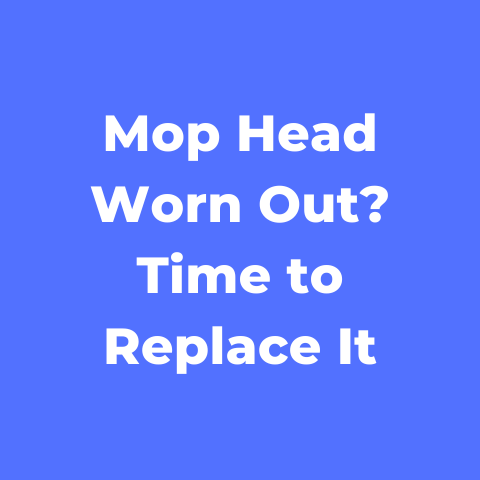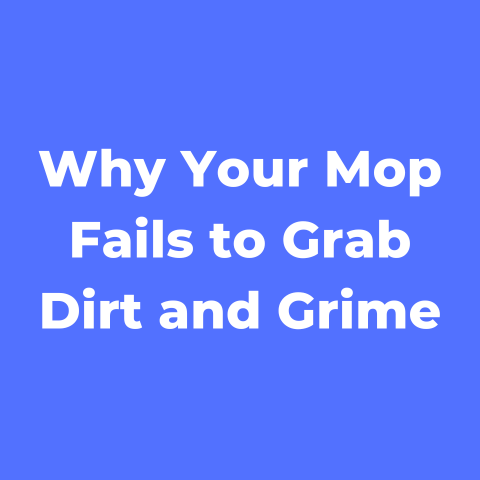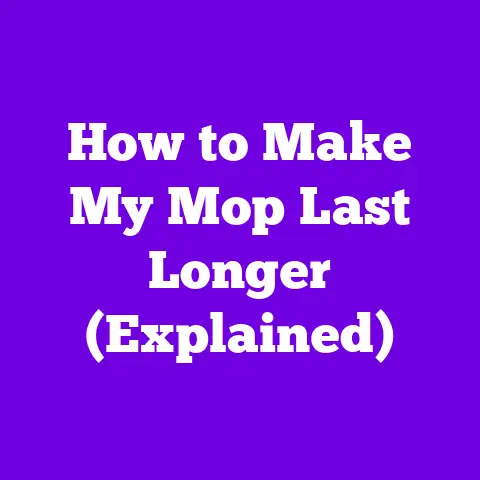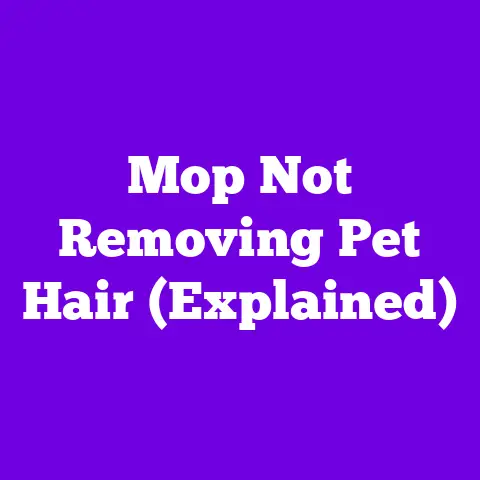Keeping Mop Heads Moist Longer (Explained)
Keeping mop heads moist for as long as possible is crucial for effective floor cleaning. Dry mop heads simply move dirt around instead of lifting it. Moist mop heads attract and absorb more dust, dirt, and grime through capillary action.
Mop heads also tend to dry out quickly during use. So learning ways to keep them optimally damp for longer is an important skill for anyone tasked with mopping floors.
Use the Right Materials
The first step is choosing high-quality mop heads designed to stay wet:
- Microfiber mop heads are ultra-absorbent and less prone to drying out fast. The microfiber material attracts and traps dirt through static electricity.
- Cotton-blend mop heads also effectively absorb and retain water due to the natural fibers. Make sure to get string mops with a high cotton percentage.
- Avoid 100% rayon or polyester mop heads. These materials repel water and won’t hold moisture well.
In addition to the right mop heads, use a high-capacity mop bucket to store plenty of cleaning solution. Choose a bucket with a built-in wringer to control water absorption.
Presoak Floors and Mop Heads
Presoaking is a simple but effective way to keep moisture locked in. Here are two techniques:
Presoak Floors
- Sweep floors first to remove loose dirt and debris. This prevents prematurely dirtying the mop water.
- Mix your preferred cleaning solution according to package directions.
- Use a spray bottle to liberally apply the solution directly onto floor surfaces.
- Let it soak for 5-10 minutes so dirt and grime can loosen.
Presoak Mop Heads
- Add hot water and cleaning solution into your mop bucket.
- Immerse new/dry mop heads fully in the water for 20-30 minutes before mopping.
- The extra time allows mop fibers to fully saturate so they won’t absorb as much liquid during use.
Wring Properly Between Sections
It’s vital to wring mop heads correctly when moving between floor sections:
- Roll or press mop heads gently to remove excess water without fully wringing out.
- Harsh, hard wringing forces too much liquid out, drying the mop prematurely.
- Wring gently to leave mop heads damp but not dripping wet for ideal moisture levels.
Rinse and Re-wet As Needed
When mop heads start losing their dampness mid-use, employ these re-wetting methods:
- After cleaning a 4×4 foot section, rinse contaminated mop heads in a second rinse bucket.
- Press gently between rinse cycles to remove dirt without excess water loss.
- Then re-dip mop into the soap solution to reabsorb moisture before moving to the next section.
Use Damp Mop Pads
For extremely thirsty mop heads that still dry out quickly, try using:
- Damp mop pads – These attach onto mop heads to provide an additional moisture layer. The textured surface helps scrub floors too.
- Soak pads in water for 1 hour before attaching them onto mop heads prior to cleaning.
Consider Mop Head Alternatives
Standard string mops aren’t the only option. Specialty mop heads can retain more water:
- Flat mops – The continuous fabric design holds over twice as much liquid as looped-end mops.
- Steam mops – These electronically-heated mops continually generate steam to keep moisture levels high.
Use Optimal Floor Cleaners
The right cleaning solutions also help mop heads retain dampness longer:
- Solutions with high water content get absorbed better and slow down drying time.
- Glycol ether-based cleaners stay moist through hydrogen bonding between water and glycol molecules.
- Natural oil cleaners introduce a protective layer that seals in moisture.
Avoid sudsy cleaners. The foam and bubbles in soapy solutions causes faster moisture evaporation.
FAQs
Still have questions? Here are answers to some commonly asked questions:
How often should I soak/replace mop heads?
- Soak new mop heads for 20-30 minutes before first-time use.
- Presoak for 5 minutes before each subsequent use for sanitization.
- Replace mop heads every 2-3 months with regular use.
How do I clean mop heads between uses?
- Rinse thoroughly with clean water and allow to air dry.
- Machine wash cotton/microfiber mop heads if heavily soiled. Avoid fabric softener.
- Disinfect with a non-sudsy bleach solution for 5 minutes if needed.
Can I use hot water in mop buckets?
Yes, hot water allows faster dissolution of cleaning agents. Just ensure water temperatures are below 140°F to avoid damaging mop fibers.
What’s the ideal mopping technique?
- Work in 4×4 foot sections, mopping back and forth in a zig zag pattern.
- Flip mops often to expose new surface area and absorb more liquid from the floor.
- Rinse and re-wet mop heads every 1-2 sections to retain moisture.
Conclusion
With the right materials, proper technique, and moisture-boosting methods, you can keep mop heads damp for longer periods. Consistently wet mops allow for deeper cleaning by lifting away more contaminants from floor surfaces.
Implement the tips outlined to make mopping faster, easier and more effective. Retaining moisture keeps floors cleaner for longer while requiring less repetitive mop re-wetting.






